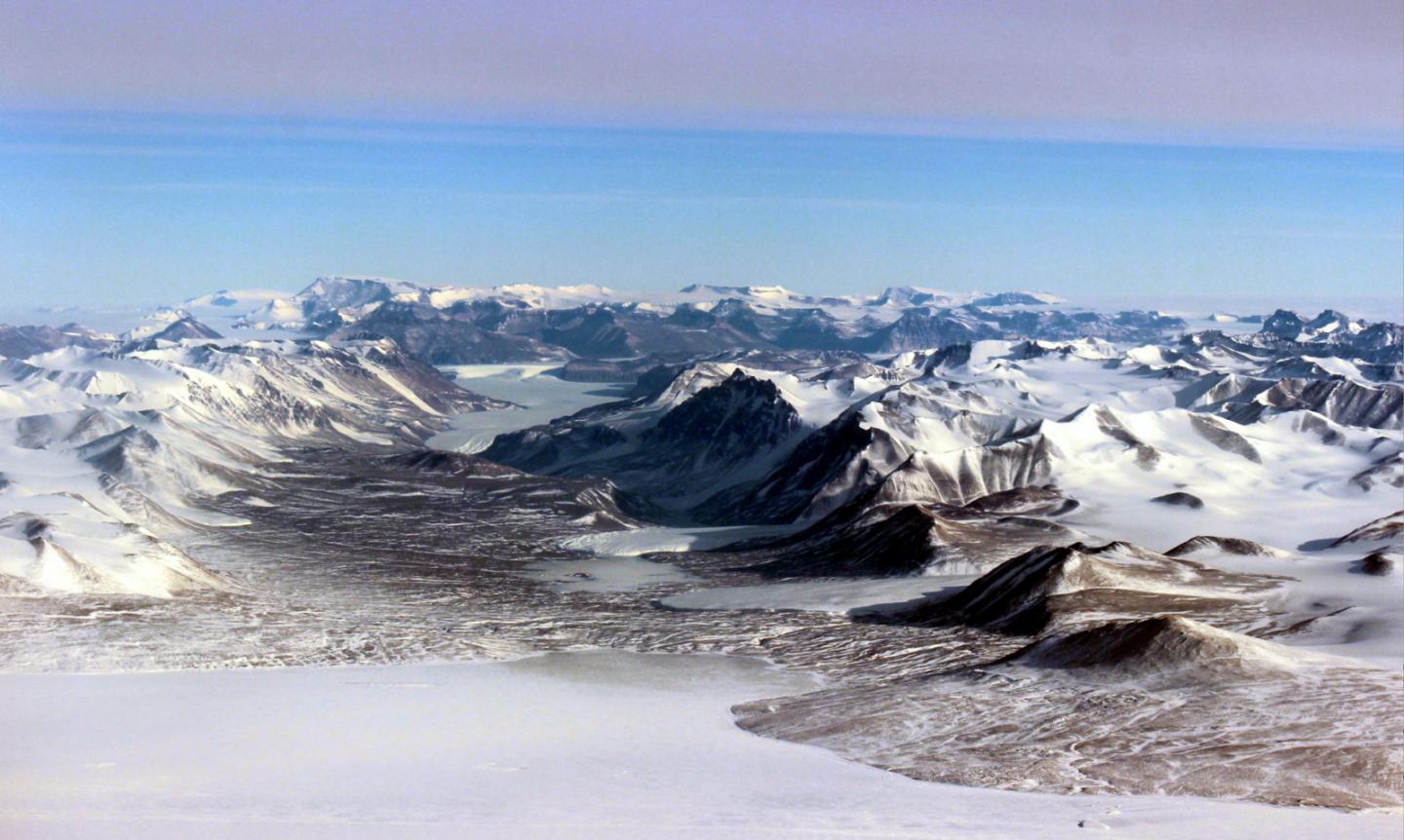
Credit: McMurdo Dry Valleys LTER
Antarctica is a nearly uninhabited, ice-covered continent ravaged by cold, windy, and dry conditions. Virginia Tech researcher Jeb Barrett was part of an international collaborative team that analyzed biodiversity patterns in the McMurdo Dry Valleys of Antarctica.
“Surprisingly, we found that biotic, or living, interactions are crucial in shaping biodiversity patterns even in the extreme ecosystems of the Antarctic Dry Valleys. Antarctic soils are model ecosystems, limited by the extreme climate and lack of vascular plants, and they host simple food webs with few species,” said Barrett, professor in the Department of Biological Sciences in the College of Science.
These findings were recently published in two separate papers in Communications Biology. A paper on biotic interactions analyzes the entire community of soil organisms; its companion paper focuses on the soil nematode community using a modeling approach.
Characteristics of Antarctic communities, such as simple food webs and low species richness, allow for a greater understanding of the whole community, from bacteria to multicellular invertebrates.
This research is the product of an international collaboration of scientists from half a dozen countries: the United States, New Zealand, Canada, Australia, Great Britain, and South Africa. Organized by the University of Waikato and the New Zealand Antarctic Program, it is the first of its kind to study a soil community in its entirety at a regional scale.
Barrett has been conducting research in Antarctica for 20 years; he deployed for this research collaboration in 2009 and 2010. Research in the Barrett lab addresses the influences of soils, climate variability, hydrology, and biodiversity on biogeochemical cycling from the scale of microorganisms to regional landscapes.
“My research in the Antarctic has been focused on analyzing the physical and geochemical drivers that predict biodiversity patterns. I focused initially on the nematode communities, and my work has now expanded into the bacterial communities, as well,” said Barrett, an affiliated faculty member of the Global Change Center, housed within the Fralin Life Science Institute.
The Communications Biology paper on biotic interactions considers the entire community of soil organisms: cyanobacteria, heterotrophic bacteria, nematodes, and other microscopic invertebrates. The scientists studied the factors that determine the distribution and abundance of these organisms, as well as temperature, topography, distance to the coast, and soil properties, such as water and pH levels, in their analysis.
“What makes this paper truly unique is that we considered the entire community of soil organisms and all the possible biotic and abiotic interactions that potentially shape the species composition and diversity,” said Barrett. “We used the statistical technique of structural equation modeling to tease out what the drivers of these communities are.”
Biogeochemistry and climate have strong effects on biodiversity, but this new data demonstrated that there are two other important factors. They found that biogeography and species interactions are stronger drivers of biodiversity than originally expected. Biogeographic processes occur when an organism moves through space, interacting with its community as it moves. Species interactions, such as predator-prey relationships and competition, also influence biodiversity.
In the companion paper, the researchers used a modeling approach to study the co-occurrence and distribution of three dominant nematode species found in the soil. Nematodes, also known as roundworms, are a group of simple organisms that have successfully adapted to nearly every ecosystem on Earth. The researchers demonstrated that competition is a more important driver of diversity patterns in the nematode community than previously thought.
“We modeled three nematode species – Plectus, Scottnema, and Eurdoylaimus – that are potentially interacting. Our results show that it is not just environmental drivers that influence species distribution across the polar landscape but that competition and interactions are playing a large role in diversity patterns as well,” said Barrett.
The future challenge for researchers is to understand how the effects of climate change on these interactions will alter species coexistence in Antarctica. They expect that with increasing temperatures, the thawing of ice will create environments that select for nematode species more adapted to warmer and wetter environments. Early indications of this have already been observed in the team’s long-term monitoring studies of soil communities, as reported in the journal Ecology last year.
Barrett’s ongoing research is funded by the National Science Foundation’s Long Term Ecological Research (LTER) Program. His research goal with the LTER is to use a combination of manipulative experiments and long-term observations to understand how climate variability influences Antarctic organisms and ecosystems.
###
Media Contact
Kristin Rose
[email protected]
Original Source
https:/




